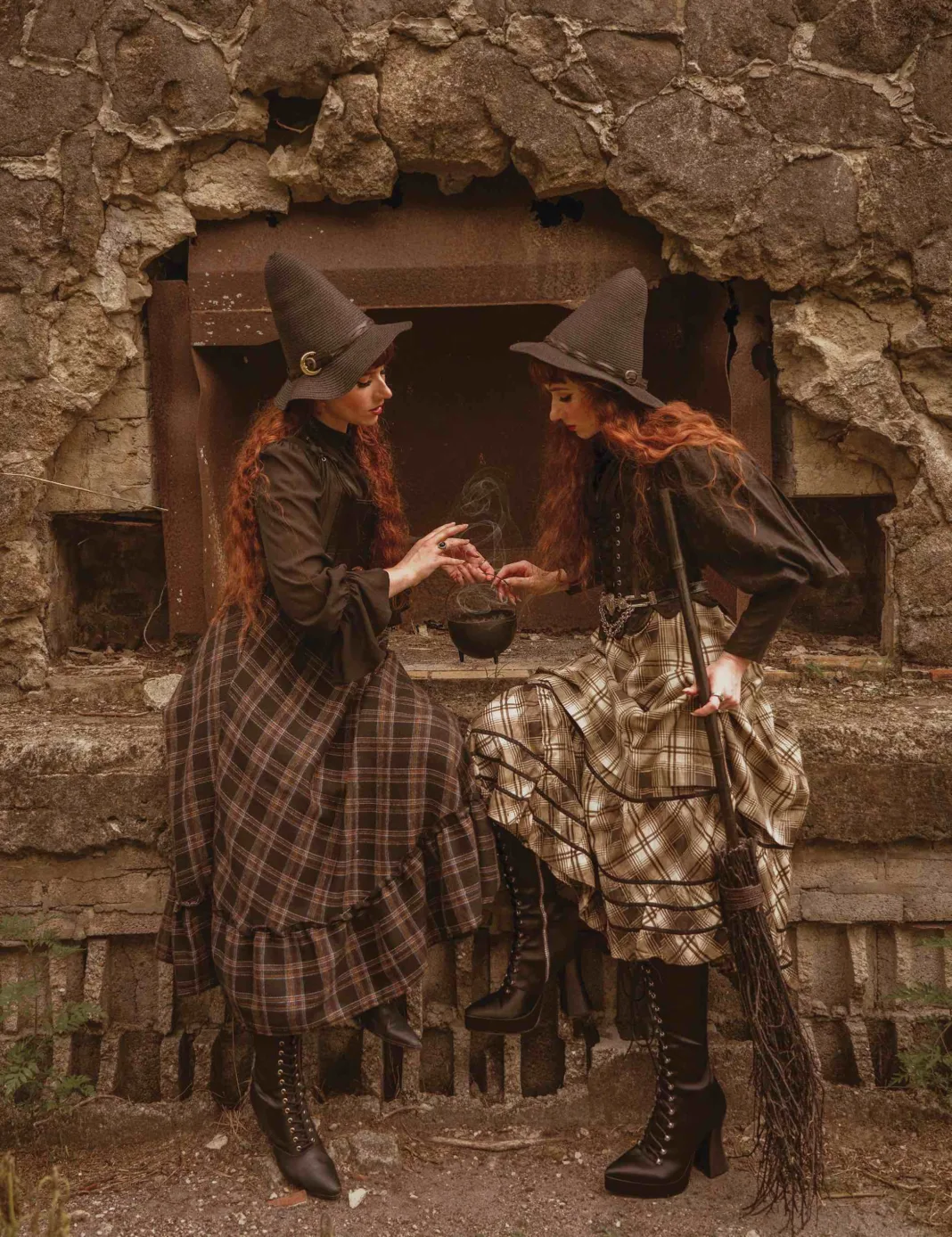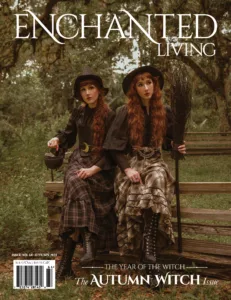Admit it: When you saw this month’s cover image, a frisson ran up your spine. The tilt of the eyes. The elfin points of nose and chin. The russet curls, the tapered fingers … doubled. And there you were, ensnared by our twin autumn witches.
Every twin is a sorceress. We cannot look away, unless it is to look at her sister. We are dazzled by the symmetry of an identical pair: We count up the echoes of eye color, ear shape, and shoe size, the similarities of inflection and gesture when they speak. We gaze at the whorls of their DNA helices and marvel that even their chromosome maps are identical. They look like the same person on paper, but instead they are two, in blissful harmony.
And that is the fantasy. Surely, we think, the physical resemblance has a metaphysical significance. It immediately suggests spiritual kinship and perfect understanding. Twins cannot belong to this world; they must have been sculpted in the other realm of goddesses and demigods, heroines and ghosts, and, yes, witches. The similarity means being seen as we would want to be seen: in the perfect mirror of another soul.
As our Pre-Raphaelite spellcasters say in their interview, their special relationship does mean all that. Bren and Pip find themselves thinking the same thoughts and sharing an aesthetic; their art is a complete collaboration. Their pairing is like holding a candle to a mirror—it makes the light brighter.
But no twins (or even clones) actually are exactly alike. Science struggles to explain why two people with identical genetic material end up with different fingerprints, slightly different heights, differences. Maybe it starts with tiny changes in who lies where within the womb—a breath taken a second later, a cold caught by one twin but not the other.
There is magic in the play of differences too, in the endless series of what-ifs and then-it-happeneds.
Sometimes in an idiocentric culture, symmetry seems to go too far, till it carries a different weight. It might take on a cast that seems straight out of Edgar Allan Poe or the twists of Nabokov. Say, perhaps, you sense that somewhere in the world there is a stranger with your face, your build, maybe even your name. This doppelgänger is your shadow self She comes from the other side of the globe (or just around the corner) and dogs your steps, whispers of doom, makes friends with your friends. Takes over your life.
From time to time, you catch a glimpse. She disturbs you in the way that a certain Viennese doctor described when an elderly man intruded into his train compartment—a man who was both familiar and unfamiliar at once. It took a moment to realize that he was looking at himself, reflected in a mirrored door. For that moment, he was a stranger to himself—and yet somehow familiar. He called it uncanny, a portal into an otherworld.
When you meet your shadow twin, uncertainty might take hold. Are you the double, or are you the main character (so to speak) in your own life? Perhaps you don’t want to know. You are warned by Poe’s “William Wilson” and Washington Irving’s “Unwritten Drama of Lord Byron”—in slaying the doubles, the heroes destroy themselves too.
That is not going to happen to a witch. A witch sees the whole universe. She is able to hold several contradictory ideas at once, including the sense that she is an independent individual and that she has an echo somewhere in the world. So you embrace even your shadow self as a twin. You might even invite her on a broom ride through the forest …






























 Enchanted Living is a quarterly print magazine that celebrates all things enchanted.
Enchanted Living is a quarterly print magazine that celebrates all things enchanted. 



